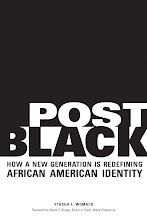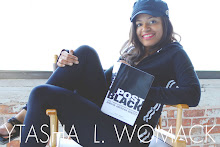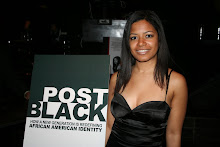Wednesday, June 30, 2010
Rare Coin Investments: Interview with entrepreneur Kenneth Smaltz
Kenneth Smaltz is CEO and President of K. Smaltz, Inc., the first African American owned rare coin company in the United States. Smaltz buys and sales rare coins to private investors and collectors. He's based in Freeport, New York.
YLW: I'm sure you get some puzzled looks when you tell people you're in the rare coin business.
KS: People expect you to sell stocks or real estate. When you say you sell rare coins and precious metals, they say “how do you do that?”
YLW: What's the scope of your business?
KS: It's more synonymous with an individual selling antiques or art. It's not something you get dividends from. It's not a security. It's a collectible. I deal with all U.S coins. Some people collect because of the history of it. They buy coins from the Civil War, WWII, etc. People sometimes collect because they're interested in the investment aspect of the coin. They realize that if it's held on to, they can make money. They say sell me a coin you think in time will appreciate. People buy for beauty, history or the investment.
YLW: What factors determine the value of a coin?
KS: Rarity, meaning how old is the coin. Rarity can determine the value of a coin. The condition of a coin, what it looks like and the degree of preservation are factors, too. Sometimes the time period can give it value, too, like if it's a coin from the Civil War, WWI, or WW2.
YLW: What coins should investors or collectors look for?
KS: The coins you would want to collect and invest in, in the U.S should be pre 1933. Any coin can be collected, but the one's I recommend were made before 1933.
YLW: Why?
KS: After that point they started making larger quantities of them, which means there are a lot around. In 1933, a lot of coins were melted for several reasons . .. to raise money for war preparation, etc. Anytime a coin is taken off the market it causes it to be more rare. If you have ten of something and someone destroys eight of them, it makes those two more rare.
YLW: When people think investments, rare coins don't come to mind? Why not?
KS: I'll just say that it's not something that we as African Americans are familiar with, but it's something that other ethnicities have been aware of for quite some time and have been doing for many, many years. It's a part of their portfolio, stocks, bonds, art, real estate and rare coins. It's just something our ancestors weren't aware of.
YLW: How did you get involved in the rare coin market?
KS: It was 1984, I was hired to work in the shipping department in a company that sold rare coins and precious metals. The company was a few blocks from the New York Stock Exchange. In shipping, I would ship the coins that sales people would sell to clients.
KS: When I first got there, I was only 21 years old. There was a gentleman who worked in the company, a senior vp. He was very hands on. He came down into shipping every day, to see what we were doing down there. He would explain to us on different occasions that he liked to hire within .. .that way you know how it works from top to bottom. He said you have to work hard and show initiative. That's all I needed to hear. I put in a lot of hours.
KS: The shipping department was like a vault that housed coins that could go for $100,000 per coin. It also housed gold and silver bars. You're looking at millions of dollars worth of metals in this area. It had to be picked up by Brinks very early in the morning. Sometimes they would ask people to stay over into the morning and meet Brinks. After a year, they trusted me enough to do it. I was there in the morning, at night. When they needed me, I was there. His name was Luis Vigdor. I still know him. One day he said to me' I think its time for you to move up.' After a year, he sent me up to the retail division. It was like a bank. The retail division was where people would come in and out and buy foreign currency and buy coins off the street. It was one floor up off the vault. I worked there another year. I worked very hard. Then he said, I think it's time we bring you up into sales. That's when I started selling rare coins to private people.
YLW: How does it work?
KS: A good part is cold calling. The company advertised in the Wall Street Journal, NY Times. We would take those calls and try to create a base of customers. That's how I started.
YLW: Why did you start your own business?
KS: I had been doing it off and on since 1984. I was with that company for 7 tears. Then there was a downturn in the rare coin industry and they laid us all off. Then I moved to Atlanta, and the company was referred to me by Luis Victor. He's a good man. I worked for them for two years. I wasn't making as much money as I would have liked. Then I was referred to a rare coin company in Minnesota. But there are rare coin companies all over the world, I just chose to stay in the U.S. I worked there for 3 years, and then I wanted to come back home. I missed New York.
KS: I called the same guy said I want to come back and he suggested a company way out on Long Island. I worked out a deal with them and came back. That's when I said, I've been doing this for some time. I know what to do, I have my own clients, I know how to generate clients, but I still wasn't ready to go on my own. I said I'll start a company, and I'll work a deal out with the company I work for to get a larger percentage of the commissions. We partnered off and got a larger percentage of the pie. If anything were to happen, I'd be covered by the company. After a while, I got tired of sharing the profits with people and said I can do this on my own. If you have your own customers and you know how to generate customers, it's simple you have to take the initial leap.
YLW: You also do custom coin minting. What does that entail?
KS: That started in 2004. I joined the Friars Club in NYC. It's a group of retired executives as well as some people in music and entertainment. Most of my industry consist of elderly people believe it or not. People from 50-70 years of age. If you look at the Friars Club, that's what they consist of. I decided to join. I knew two people who were members. You have to be sponsored, so they got me in. I joined to get clients, but then when I saw they were doing their 100th Anniversary, I said I've never done this before but I wonder if you would like a coin to commemorate your anniversary. A gentleman their pushed the idea through. So I created the coin. . The Friar's Club are known for their roasts so the slogan on the coin was “100 years, 1 million laughs.” It's a club of comedians.
YLW: How long has this industry been around?
KS: It's been around as long as there have been stocks and bonds. People have been collecting coins since before Christ. There are coins from B.C.
YLW: Do you know any black rare coin investors?
KS: I know of one person who is a collector. I've never met any black investors. There are some who have bought in the industry, but I haven't had any as customers. There aren't many of them. Although my industry isn't as big as the stock market, there are several thousand sellers in the U.S. And the number is even bigger in Europe. Out of the hundreds of thousands of dealers out there, I'm sure just one half of one percent of those hundreds of thousands of dealers are African Americans.
YLW: What's the largest purchase you've ever seen?
KS: I've had a customer of mine who is a multi billionaire. I have by myself put together for him probably the largest collection of Walking Liberty Halves ever assembled. He has assembled the largest known collection of Walking Liberty Halves in the U.S. I've been helping him do that since 1997. I can't even tell you how many coins he has. But dollar wise, I can't even put a price tag on it. It's priceless. Think of someone buying from you every month for the past 12 years, purchases, anywhere from $30,000 to $800,000 a month of the same type of coin, several different types and grades. I would bank on it that no one has this type of collection. When he decides to put this on the market, it will be a seminal even.
For more information on Kenneth Smaltz and coin collecting go to www.keeperofthecoins.com
Subscribe to:
Post Comments (Atom)






Hey, nice site you have here! Keep up the excellent work!
ReplyDeleteEntrepreneur Interview
Investing in the gold and silver market is very beneficial. The price is higher and never goes down to its initial point where before 1975 the price was only about $37 per ounce. Nowadays, besides shares and obligations, those commodities are getting popular because the returns are higher and it's almost has no risk.
ReplyDelete